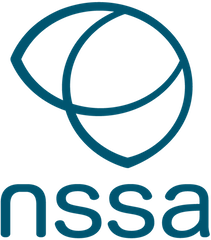For the love of routine EEG!
As a budding Neurophysiology Scientist some 20 years ago, one of the first things I was taught by a now well reputed Professor of Paediatric Neurology, was that EEG alone does not diagnose epilepsy. Sitting beside her, listening to her report EEG was an invaluable learning experience. She would frequently turn to me and quiz me on the EEG. She would ask me to consider many factors…to think about the patient’s presentation, the clinical features of the event, the frequency and timing of the event, the age of the patient, family history, whether they had recently eaten, their dominant hand, effect of medication, state of the patient…to describe the EEG background, frequencies, amplitude, abnormalities, benign variants, artifacts… she even scrutinised my troubleshooting efforts! She demanded quality.
Quality in setup, quality in execution, quality in video and quality in reporting. She encouraged me to think beyond the technicalities and learn about epilepsy.
Having a sound knowledge of EEG features, seizure types, epilepsy syndromes, aetiologies and abnormalities present at different ages is very helpful. Context provides for more meaningful EEGs. Experience builds skills and practice yields confidence in performing and interpreting EEG.
Just as important is recognising the pitfalls of EEG. A normal EEG does not exclude epilepsy nor does an abnormal EEG include epilepsy. Research shows that the sensitivity and specificity of a single routine EEG is low¹. Performing an EEG without the proper clinical indications may be more harmful that contributory.
In practice, there are many reasons for EEG referrals. Not all of them are urgent. Some presentations are not clinically indicated for EEG based on established EEG guidelines².
Inappropriately referred patients compete directly with more appropriate service users placing strain on EEG services and increasing waiting times and cost, as well as increasing the likelihood of misdiagnosis³.
Here at Monash Health we perform thousands of routine EEGs each year, both adult and paediatric. The Neurophysiology Scientists took the initiative to conduct a little project, a qualitative review of EEG referrals looking at the clinical indications for routine EEG and the
EEG epileptiform yield. A retrospective study of 200 paediatric and 200 adult EEG referrals were included, note was made of referral details, referring doctors, waiting times and EEG findings. The results were interesting.
The NSSA provides an interactive platform for Neurophysiology Scientists to present their ideas. We hope to share our findings with you at the next NSSA meeting. We are proposing a framework for EEG triaging, addressing risk and timely delivery of routine EEG. We invite your input and collaboration. Your experience in EEG is invaluable and can help optimise clinical EEG practice in the future.
Establishing an evidence-based framework for EEG triage will facilitate timely tests, benefit our patients most in need and limit the overutilisation of our scarce EEG resources.
¹ Tatum WO, Rubboli PW, Kaplan SM, Mirsatari SM et al. Clinical utility of EEG in diagnosing and monitoring
epilepsy in adults, Clinical Neurophysiology, 2018
² SIGN guideline. Diagnosis and management of epilepsy in adults. A national clinical guideline. Scottish
Intercollegiate Guidelines Network, 2003
³ Pearce KM, Cock HR. An audit of electroencephalography requests: Use and misuse. Elsevier Science, 2006
Written by Miranda Kouspou
Monash Health

